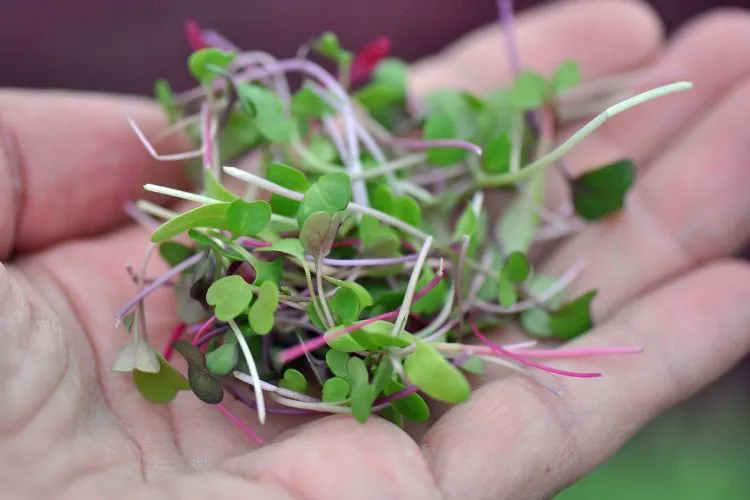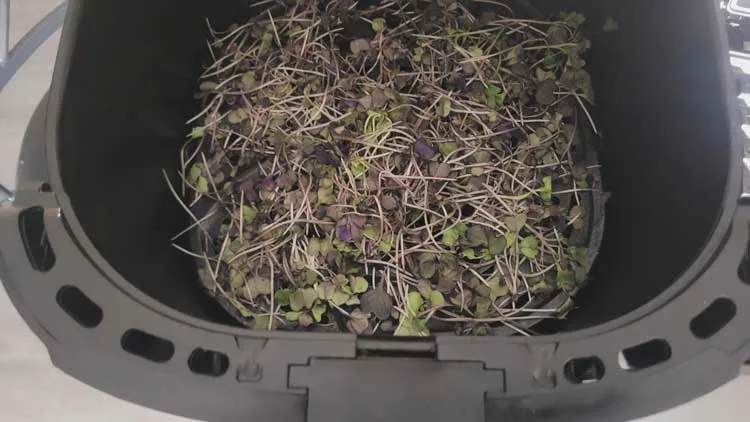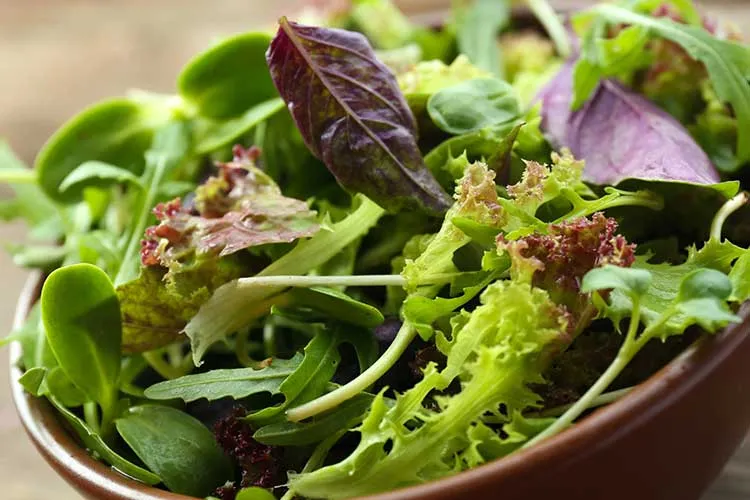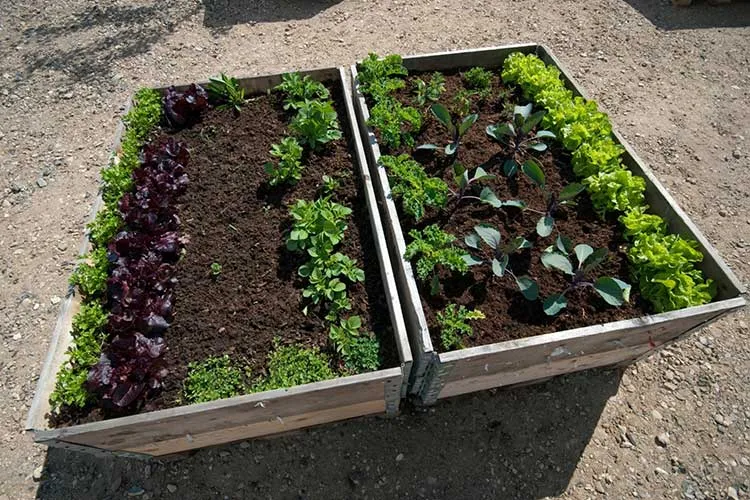Cabbage is one of the most widely grown vegetables, with over 70 million tons produced globally annually. Whether starting a home garden or growing microgreens, identifying cabbage sprouts early ensures strong, healthy plants. These tiny sprouts look different from mature cabbage heads, and their early growth stage is often mistaken for other seedlings like broccoli or mustard.
Understanding their shape, color, and texture helps you care for them properly and avoid common growing mistakes. From their smooth, rounded cotyledons to the emergence of true leaves, every stage of their growth plays a role in their development.
If you’ve ever struggled to tell cabbage sprouts apart from other greens, this guide breaks down everything you need to know—up close and in detail.
Physical Characteristics of Tiny Cabbage Sprouts
Cabbage sprouts start as delicate, slender seedlings with small, rounded cotyledons that spread outward from a thin stem. These first leaves are smooth and slightly oval, often appearing in pairs. Their primary role is to store energy and provide nutrients for the seedling until true leaves develop. Cabbage sprouts maintain a more rounded and compact look compared to radish, mustard, and broccoli sprouts, which have more elongated or heart-shaped cotyledons.
The stem of a cabbage sprout is relatively thin but sturdy, supporting the early leaf growth. Depending on the variety, the stem remains pale green or slightly purplish as the sprout develops. Unlike broccoli sprouts, which have a rapid growth rate and a slightly thicker stem, cabbage sprouts grow more moderately with a slender and upright form. Their early-stage appearance is defined by a smooth texture, symmetrical leaf arrangement, and a mild green color that gradually deepens as the plant matures.
Color and Texture Details
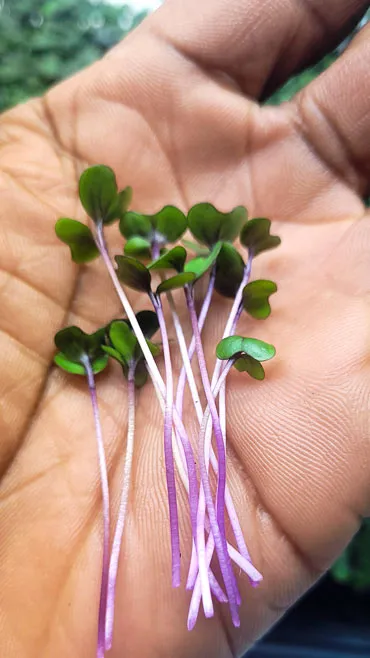
Cabbage sprouts typically start as a soft, pale green, but their color can vary depending on the variety and growing conditions. Some sprouts develop a deeper green hue as they mature, while others may show hints of purple, especially in cooler temperatures. This purple tinge is more common in red cabbage varieties due to higher anthocyanin content. The stem may also have a slightly translucent quality at first, becoming more opaque as it strengthens.
The cotyledons are smooth and slightly glossy, giving them a delicate appearance. As the first true leaves emerge, they may have a faintly wrinkled or veined texture, setting them apart from the initial smooth leaves. If exposed to strong light or fluctuating moisture levels, the texture can change slightly—drier conditions can lead to a firmer, more structured feel, while excess humidity might make the leaves softer. With proper care, the sprouts develop a vibrant, fresh look with a balance of firmness and flexibility.
Growth Progression of Cabbage Sprouts
Cabbage sprouts emerge within three to five days after planting, depending on temperature and moisture levels. The cotyledons unfold in the first few days, providing the energy needed for early growth. By the end of the first week, the stems become more defined, and the cotyledons spread outward to absorb more light.
Around the second week, the true leaves appear between the cotyledons. These leaves are slightly more textured and have the characteristic lobed shape of mature cabbage plants. At this stage, the root system also starts expanding, anchoring the plant while absorbing more nutrients from the soil.
By the third week, cabbage sprouts transition from their delicate seedling phase to a more established young plant. The stems thicken slightly, and new leaves develop at a steady pace. If grown in optimal conditions, the sprouts continue to grow evenly, with each new set of leaves increasing in size and complexity. The early growth stage sets the foundation for a healthy cabbage plant with a strong stem and a well-developed root system.
Germination and Growth Conditions
Cabbage seeds germinate best in moist soil with temperatures between 65 75°F. Warmer conditions speed up germination, while colder temperatures slow the process or prevent it altogether. Seeds should be planted about ¼ inches deep in loose, well-draining soil to allow easy root development. Consistent moisture is crucial, but overwatering can lead to rot or fungal issues.
Low temperatures, compacted soil, and excessive watering are common reasons for poor germination. If the soil is too cold, the seeds may remain dormant longer. Too much water can suffocate the seed, while dry conditions can halt sprout development. Ensuring proper airflow around the sprouts can help prevent mold growth and damping off disease.
For strong, healthy sprouts, provide bright indirect light or grow lights to prevent leggy growth. Water lightly but consistently, keeping the soil damp but not soggy. Good air circulation also strengthens stems and reduces disease risk. With the right balance of moisture, light, and temperature, cabbage sprouts develop quickly into sturdy seedlings. If you’re interested in learning more about how different sprouts grow, check out our guide to the best varieties to cultivate at home.
Edibility and Uses of Cabbage Sprouts
Cabbage sprouts are safe to eat and can be a nutritious addition to salads, sandwiches, and smoothies. Like other microgreens, they contain high levels of vitamins A, C, and K and antioxidants that support immune health. Their mild, slightly peppery flavor makes them a great complement to fresh dishes without overpowering other ingredients. If you’re comparing their taste and benefits to microgreens and other sprouts, cabbage sprouts offer a milder flavor but still pack plenty of nutrients.
While they are generally safe, sprouts grown in unsanitary conditions may be contaminated with bacteria. Using clean water, fresh soil, and proper airflow minimizes this risk. Unlike mature cabbage, sprouts are more delicate and should be consumed fresh for the best flavor and texture.
Beyond raw consumption, cabbage sprouts can be lightly sautéed or blended into soups for added nutrition. Their tender texture and nutrient density make them a popular choice for health-conscious meals. They provide a concentrated source of fiber, minerals, and plant-based compounds that support digestion and overall well-being.



